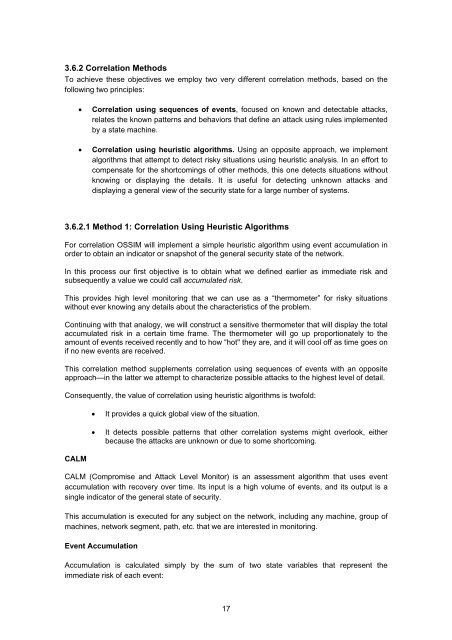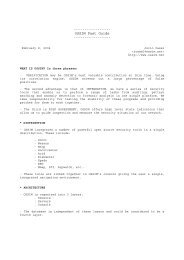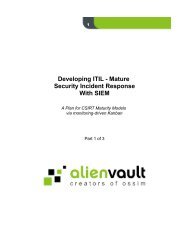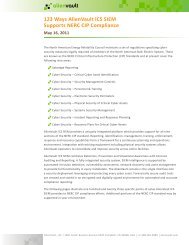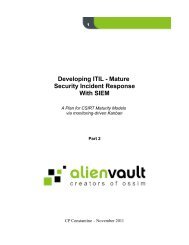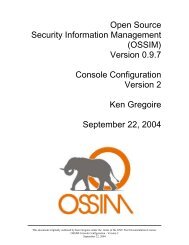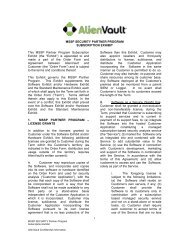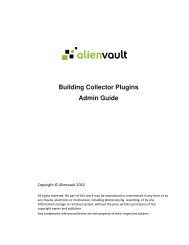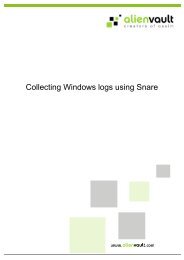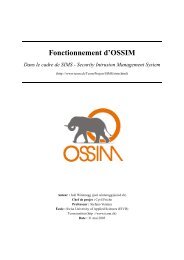ossim - AlienVault
ossim - AlienVault
ossim - AlienVault
You also want an ePaper? Increase the reach of your titles
YUMPU automatically turns print PDFs into web optimized ePapers that Google loves.
3.6.2 Correlation Methods<br />
To achieve these objectives we employ two very different correlation methods, based on the<br />
following two principles:<br />
• Correlation using sequences of events, focused on known and detectable attacks,<br />
relates the known patterns and behaviors that define an attack using rules implemented<br />
by a state machine.<br />
• Correlation using heuristic algorithms. Using an opposite approach, we implement<br />
algorithms that attempt to detect risky situations using heuristic analysis. In an effort to<br />
compensate for the shortcomings of other methods, this one detects situations without<br />
knowing or displaying the details. It is useful for detecting unknown attacks and<br />
displaying a general view of the security state for a large number of systems.<br />
3.6.2.1 Method 1: Correlation Using Heuristic Algorithms<br />
For correlation OSSIM will implement a simple heuristic algorithm using event accumulation in<br />
order to obtain an indicator or snapshot of the general security state of the network.<br />
In this process our first objective is to obtain what we defined earlier as immediate risk and<br />
subsequently a value we could call accumulated risk.<br />
This provides high level monitoring that we can use as a “thermometer” for risky situations<br />
without ever knowing any details about the characteristics of the problem.<br />
Continuing with that analogy, we will construct a sensitive thermometer that will display the total<br />
accumulated risk in a certain time frame. The thermometer will go up proportionately to the<br />
amount of events received recently and to how “hot" they are, and it will cool off as time goes on<br />
if no new events are received.<br />
This correlation method supplements correlation using sequences of events with an opposite<br />
approach—in the latter we attempt to characterize possible attacks to the highest level of detail.<br />
Consequently, the value of correlation using heuristic algorithms is twofold:<br />
CALM<br />
• It provides a quick global view of the situation.<br />
• It detects possible patterns that other correlation systems might overlook, either<br />
because the attacks are unknown or due to some shortcoming.<br />
CALM (Compromise and Attack Level Monitor) is an assessment algorithm that uses event<br />
accumulation with recovery over time. Its input is a high volume of events, and its output is a<br />
single indicator of the general state of security.<br />
This accumulation is executed for any subject on the network, including any machine, group of<br />
machines, network segment, path, etc. that we are interested in monitoring.<br />
Event Accumulation<br />
Accumulation is calculated simply by the sum of two state variables that represent the<br />
immediate risk of each event:<br />
17


